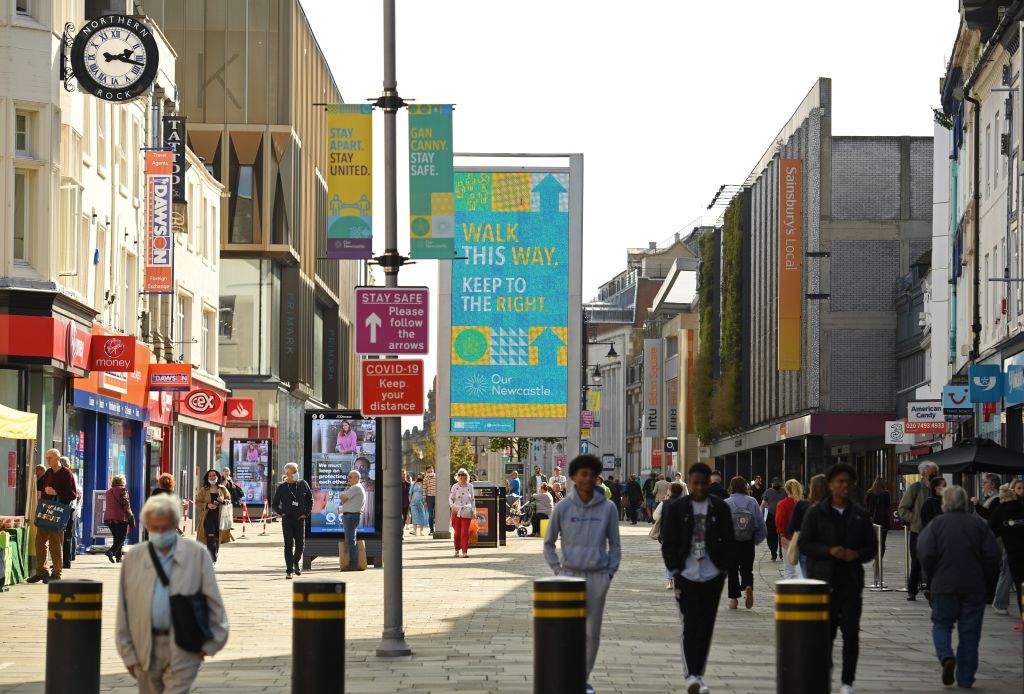August should have been a relative boom for the British economy: restrictions were the most relaxed since the Covid crisis began. Businesses in the hospitality and leisure industries were largely allowed to reopen by this point, and public transport guidance changed to allow non-essential workers to return to the office. On top of these liberalisations, schemes like Eat Out to Help Out were brought in to encourage – even subsidise – more economic activity.
Yet growth figures fell flat, increasing by 2.1 per cent – roughly half of what was expected by economists. It appears economic recovery started to stagnate (down from June’s 9.1 per cent and July’s 6.4 per cent) in a month that was primed for growth. To some extent, government schemes paid off: food and accommodation services grew by an astonishing 71.4 per cent. But even this surge was not enough to substantially lift the economy as a whole, as other areas of economy lagged behind.
This does not bode well for the rest of the year, which will see growth impacted by the reintroduction of restrictions: September’s economy has been subject to the ‘rule of six’, October’s economy the 10pm curfew for hospitality (and even the closure of pubs and restaurants in parts of the UK), and so on.
Two per cent growth would be considered an impressive boost in normal times, yet today’s GDP update has cast doubts on just how sharp that V-shaped recovery will be. Capital Economics now estimates no GDP increase in the last three months of the year, while Oxford Economics asserts Britain has officially ‘entered a tougher, much weaker, phase’ of recovery.
If Britain’s growth stagnates, or indeed stops here, how far will the UK be off its peak? With the economy still 9 per cent smaller than it was before the virus hit, we could be looking at much more heavy lifting needed in 2021 to get back to pre-Covid levels of growth.
Decent growth levels for the bulk of the summer kept many optimistic that a fast recovery was coming. Just two weeks ago the Bank of England’s chief economist Andy Haldane rejected the ‘economics of Chicken Licken’, pointing to encouraging signs of recovery instead. But today’s GDP figures are the first set of bad news we’ve had in months where the economy has been reopening.
This is made even more stark by Chancellor Rishi Sunak’s simultaneous announcement today that he is extending the Job Support Scheme – which starts 1 November – for businesses and employees who, under future Covid restrictions, may not legally be allowed to operate. It resembles the furlough scheme: if a business is shut down to curb the spread of the virus, employees will receive two-thirds of their salary (up to £2,100 per month), paid for by government. Employers will only be asked to cover pension costs and National Insurance as long as they aren’t permitted to open, and the scheme applies to businesses that are still allowed to offer takeaways and collection services. As well, closed businesses can apply for monthly cash grants (amount determined by size) that don’t need to be paid back.
Sunak’s plans are more generous than expected, but notably dish out less than the original furlough scheme. The monthly cash grant, coupled with a return to government picking up the large majority of the salary tab suggests that the policy is designed to cater to businesses that could be shut for weeks, possibly months. While many employers and business owners will take great relief in the new measures announced today, they serve as a worrying indication that restrictions are likely to tighten, and more sector shutdowns could be announced.
If the current trajectory for lockdowns and restrictions continues, it looks like there will be even more barriers and hurdles to growth in the near future: far more than in dismal August.







Comments